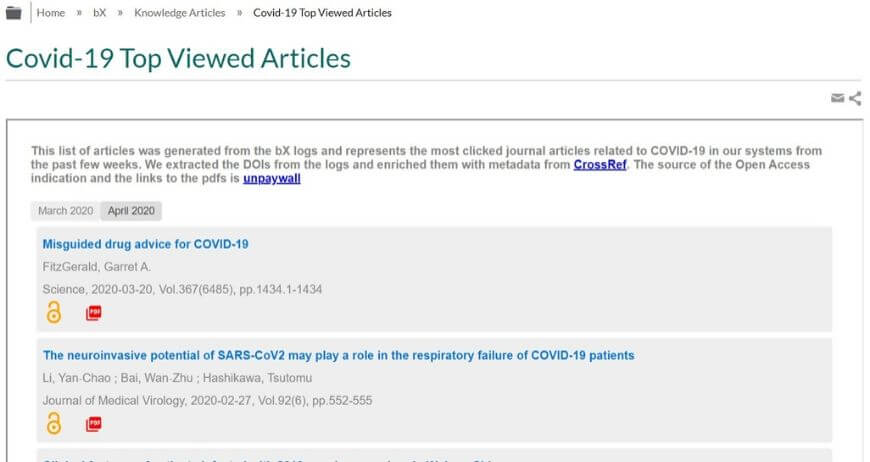By Christine Stohn, Senior Product Manager, Discovery & Delivery, Ex Libris
Last time, you will recall, I described how Ex Libris user studies were designed to provide a better understanding of users’ discovery needs, by placing their search scenarios in their real-world context. During the collection and analysis of a wide range of user case studies, three core discovery concepts repeatedly appeared in our user scenarios:
- Search and find
- Exploration
- Learning
- Personalization
In this post, I’m looking at these concepts in the context of two different scenarios that I see as fairly representative of various classes of users.
Scenario 1
A medical student prepares for a research project, which is related to the effect of a protein on specific diseases. For her research, the student received a few articles from her professor, but they are too specialized for her at this point. What she needs first is a few good overview articles to familiarize herself with the general topic, and then further articles that are more specialized. Furthermore, she would like to get some overview articles that summarize the state of current research, as well as some history, for example, to understand how the relationship between the protein and the disease was originally discovered.
This user scenario has several layers. First, the student needs to search and find general overview articles. The search engine can help here, by identifying her search as a broad topic search and list overview articles first in her results list. However, her quest also has very specific learning and exploring aspects. She needs to learn more to be able to understand her topic better and know how to search further.
Exploration features, such as the bX Recommender or facet search, can help with the learning stage by giving her new insights into the different aspects of her topic, and at the same time providing more specialized literature for those aspects.
Finally, she may still have to obtain the articles her professor pointed out. If so, she can find them with a known item search just by copying and pasting the metadata he provided into the search box, gaining direct access. Copying and pasting is not atypical for known item searches, as we know from the search logs. But even if there are variations and mistakes (if her professor is not metadata savvy, for example), then the search engine can compensate for them and provide the right item.
So, in conclusion, this scenario incorporates broad topic search, known item search, and an exploration and learning aspect.
Scenario 2
Let’s look at the opposite side of the scale – an undergraduate history student. As part of the course work, the student may have to write an essay about some aspects of the consequences of the sugar revolution in the 17th century Caribbean. While some of the literature is available via the course reading list, there are cases in which the student students has to look beyond, such as for end-of-the-year papers or if finding literature is part of his course work.
The requirement in this case is to find a few articles or books that provide enough good material for the essay. But before the student can dive deep into the subject and search for that material, he needs to select the aspect of the topic he wants to write about.
So, similar to the medical student in our first scenario, he needs to learn more about the topic, maybe by reading some overview literature, then narrow it down to an aspect of interest, and find further, more specialized material. So again, search and find is an important concept to support the student in this quest, but also important are features that help with exploration and learning. A combination of search and exploration – for example, a broad or narrow topic search, in addition to the use of facets and article recommendations provided by bX – can provide the user with the necessary material in one single search.
In the next post, I would like to look at personalization and how it can help different users of a discovery system to meet their goals.
Let us know in the comments if there are other common discovery scenarios you’d like to discuss. Or you can email me directly.
You are also welcome to download our white paper here: How Do Users Search and Discover.
Follow @ExLibrisGroup
You might also be interested in

Alma
Community
COVID-19
Librarianship
Library Discovery
May 19, 2020 |
1 min read
Introducing Two New COVID-19 Programs to Support Higher Education Institutions

bX
COVID-19
Librarianship
Library Discovery
Research
May 14, 2020 |
2 min read
What COVID-19 Articles did Patrons Access? A List of Top Viewed Articles

campusM
Leganto
Pivot
RapidILL
COVID-19
Library Discovery
Mobile Campus
Research
March 30, 2020 |
4 min read
COVID-19: New initiatives to support the Ex Libris community
Great library experiences start with software
Download whitepaper

Librarianship
Library Discovery
August 20, 2018 |
1 min read
Impact of Library Discovery: The Surveys Speak

Primo
Library Discovery
August 16, 2018 |
1 min read
How Effective is your Library Discovery? Three Important Tips

Library Discovery
Open Platform
February 07, 2018 |
1 min read
Choose Your Own Library Discovery Service

Library Discovery
Open Platform
February 07, 2018 |
1 min read
Choose Your Own Library Discovery Service

Library Discovery
Open Platform
February 07, 2018 |
1 min read
Choose Your Own Library Discovery Service

